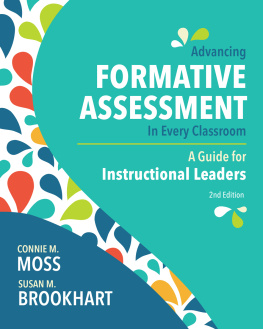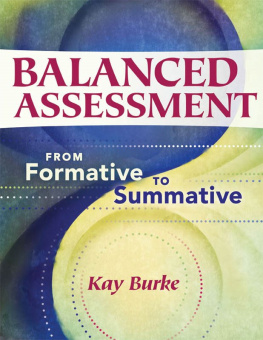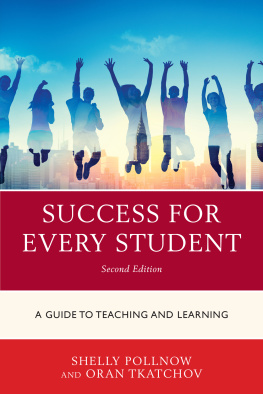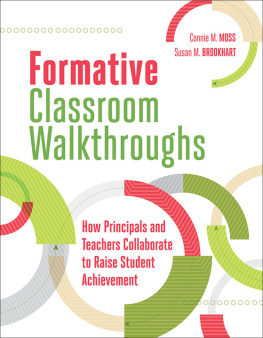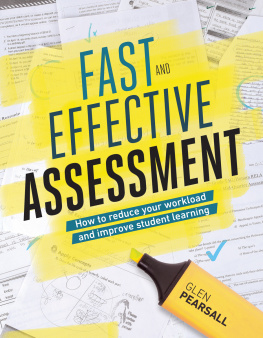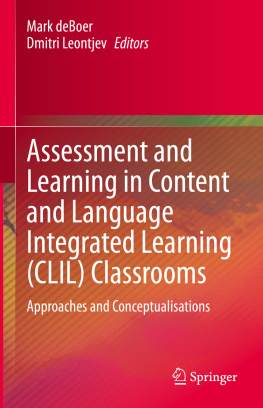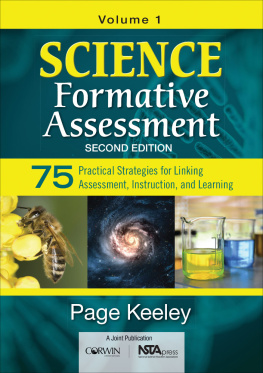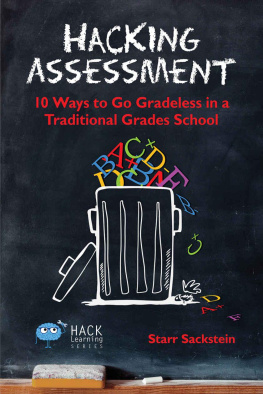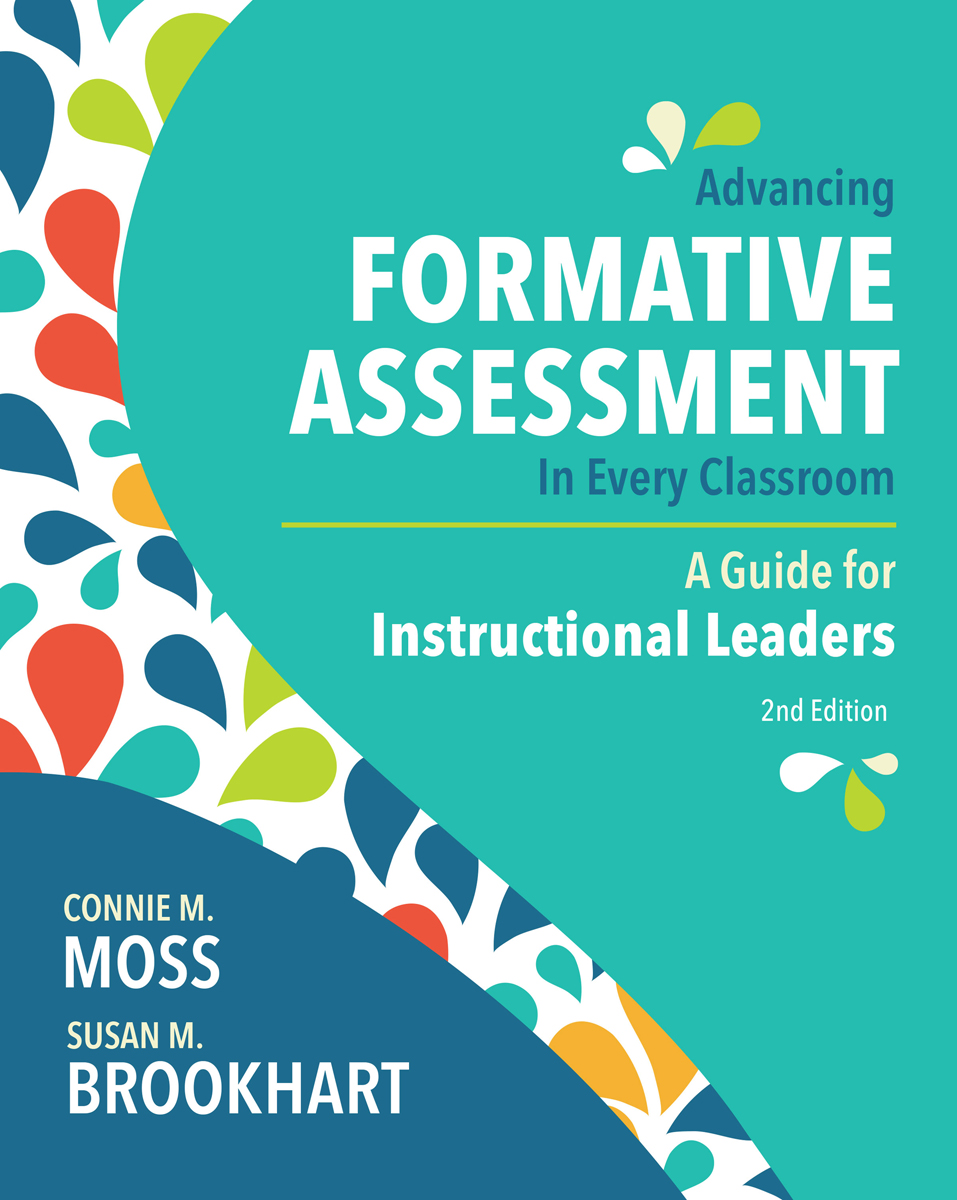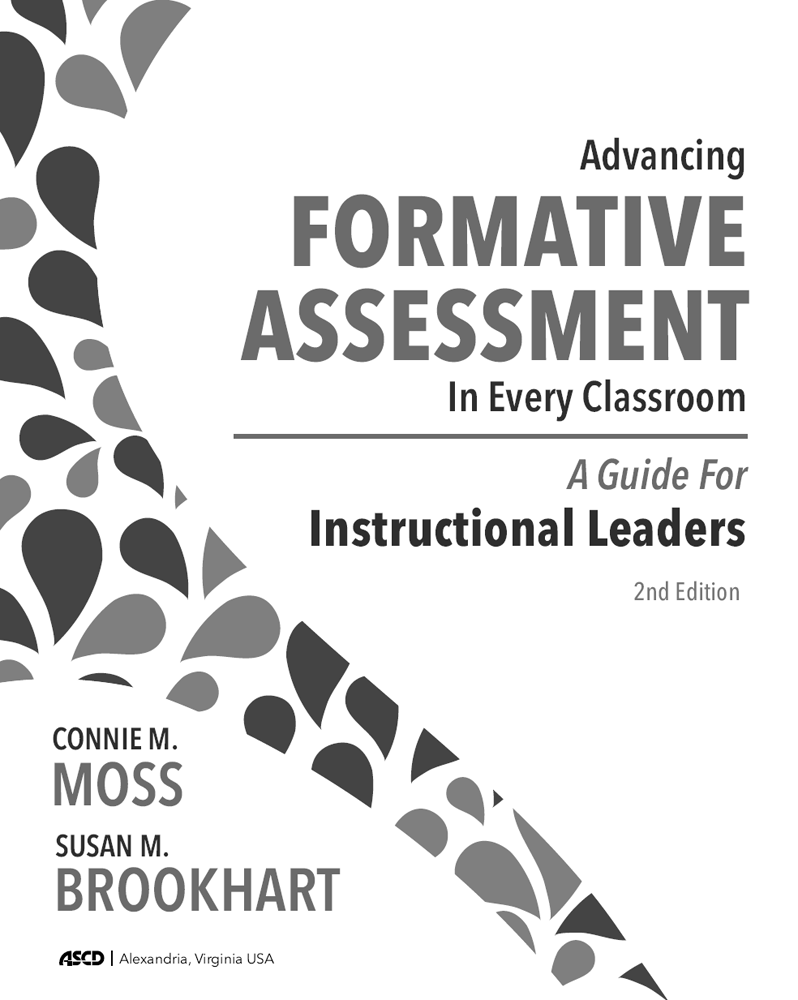Contents
Guide
Pages for Advancing Formative Assessment in Every Classroom: A Guide for Instructional Leaders, 2nd Edition
Dedication
....................
We dedicate our work on this project to the future educational leaders and teachers whose work will be better because we now understand more about how students learn.
Acknowledgments
....................
Connie is grateful for the impact of the strong women in her life, especially her daughter Rachael and her sisters Clara and Mary Jo. She is blessed by the constant love and support from her husband John.
Sue is grateful for the love and support of her entire family over many years and projects, especially her husband Frank and her daughters and their families: Carol, Sean, Rachel, Amanda, and Rowan.
Introduction
....................
Formative assessment, when used effectively, can significantly raise student achievement and improve teacher effectiveness. Yet high-quality formative assessment is rarely a consistent part of the classroom culture. Teachers are neither sufficiently familiar with it nor equipped with the knowledge or the skill to put the formative assessment process to work for themselves and their students.
This book is intended as a resource for school leaders as they work with teachers to make the formative assessment process an integral part of their classrooms. We focus on classroom-level practices that affect student learning and achievement, build capacity, and foster schoolwide outcomes that can meet the demands for high-stakes accountability facing today's education professionals. And amid calls for data-driven decision making, we intentionally focus the book on practices that put information about learning into the hands of the most important decision makers of allthe students.
It has been 10 years since the first edition of this book was published. In that time, significant advances have been made in the world of learning and assessment. Specifically, we now know even more about the importance of student self-regulation of learning and its connection to formative assessment. And there is more research evidence about the importance of school leaders, especially building principals, in creating a schoolwide learning climate that features formative assessment and self-regulated learners. Three major changes in this second edition emphasize the role of students in formative assessment and learning and the role leaders play. First, we have expanded Chapter 2, on learning targets, and emphasized throughout the book that in order for formative assessment strategies to work, students must first be trying to learn something. We have also expanded Chapter 3 to emphasize the follow-through that must occur as students use feedback. Finally, we have expanded Chapter 4 to include discussion of peer assessmentthat is, peer feedback on classmates' work when they are both aiming for the same learning target.
We have organized this book so that school leaders, school teams, and collaborative groups can use it as a guide to engage in highly effective formative assessment practices that promote school improvement and increase student achievement. We place particular emphasis on the ways that the formative assessment process enables students to harness the workings of their own minds to become self-regulated, assessment-capable learners.
We begin in Chapter 1 with an overview of the formative assessment processwhat it is and what it is not. Then, to emphasize classroom practices that not only help students achieve but also help them learn how to learn, we have organized the next six chapters around six elements of the formative assessment processone per chapterthat we believe have a particularly powerful effect on student learning and teacher effectiveness. We have arranged the elements in a logical sequence that has been, in our experience, very successful in helping teachers integrate the formative assessment process in ways that build on the elements' interrelated nature to maximize their effect. We highly recommend that school leaders use this sequence when they support and coach teachers to ensure that all teachers and students succeed.
We use the following set of Q&A prompts to examine each element of the process and show its connection to increased student achievement and motivation to learn:
- What is it?
- How does it affect student learning and achievement?
- What common misconceptions might teachers hold?
- What is the "motivation connection"?
- What specific strategies can I share with teachers?
- How will I recognize it when I see it?
- How can I model it in conversations with teachers about their own professional learning?
- What if?
As the sequence of questions suggests, we structure each chapter first to "tell." We explain the element of the formative assessment process, supporting our description with relevant research on its effects in the classroom. Next, we use classroom examples to "show" how teachers and their students can incorporate formative assessment into their day-to-day, minute-by-minute teaching and learning. Finally, we suggest strategies for using highly effective classroom practices that boost student achievement, maximize the collection and use of strong evidence of student learning to support instructional decisions, and bring increased clarity and coherence to the teaching-learning process. What's more, we argue strongly for teachers and principals to recognize and cultivate students as self-regulated and assessment-capable learners. If students are not intentionally gathering and using evidence from their own work to improve their learning, then what is happening in the classroom does not meet our definition of formative assessment. The strategies we promote are useful for all teachers in all grades and content areas. Each of these chapters not only covers the "what" and the "how" but also begins with perhaps the most important aspect: the "why."
We also use Chapters 2 through 7 to describe practical ways that school leaders can model and use the elements of the formative assessment process during conversations with teachers. We envision these conversations happening as part of formal classroom observations and formative classroom walkthroughs and during other communication with individual teachers and teacher groups. These formative conversations can enrich professional relationships, promote a schoolwide culture of inquiry, and encourage teachers to learn together about the significant relationship that exists between the quality of their teaching practices and the level of student achievement in their classrooms.
We finish each of these chapters by providing two ways for educational leaders to extend their thinking about the focus of the chapter. First, we provide a short "What If?" scenario to help you think through possible challenges and to offer supportive advice. Second, we suggest reflection questions to assist you in gauging where you are in terms of high-quality formative assessment practices. Finally, each chapter concludes with a summary of the major points.
In the book's final chapter, we discuss taking formative assessment schoolwide and note the role that formative assessment can play in transforming all learning and all learners in the school. When educators engage in collaborative inquiry around their daily impact on student learning and achievement, the students in the school benefit. This impact, in our experience, increases exponentially when educators base their decisions on the evidence they gather from what students actually do, say, make, and write to learn during each lesson. This is why the formative assessment process can have such a powerful influence on taking good schools to the next level and helping struggling schools turn themselves around.

